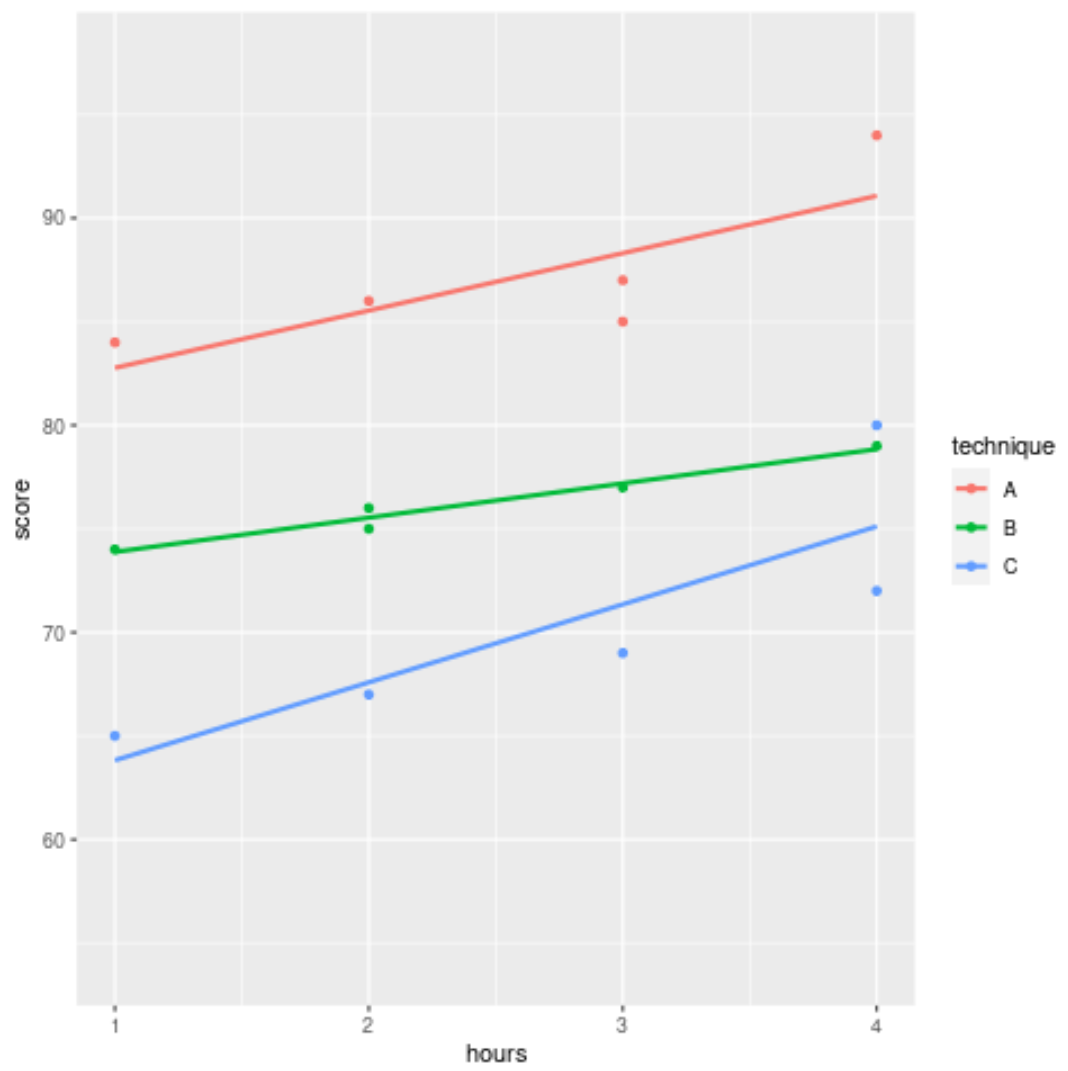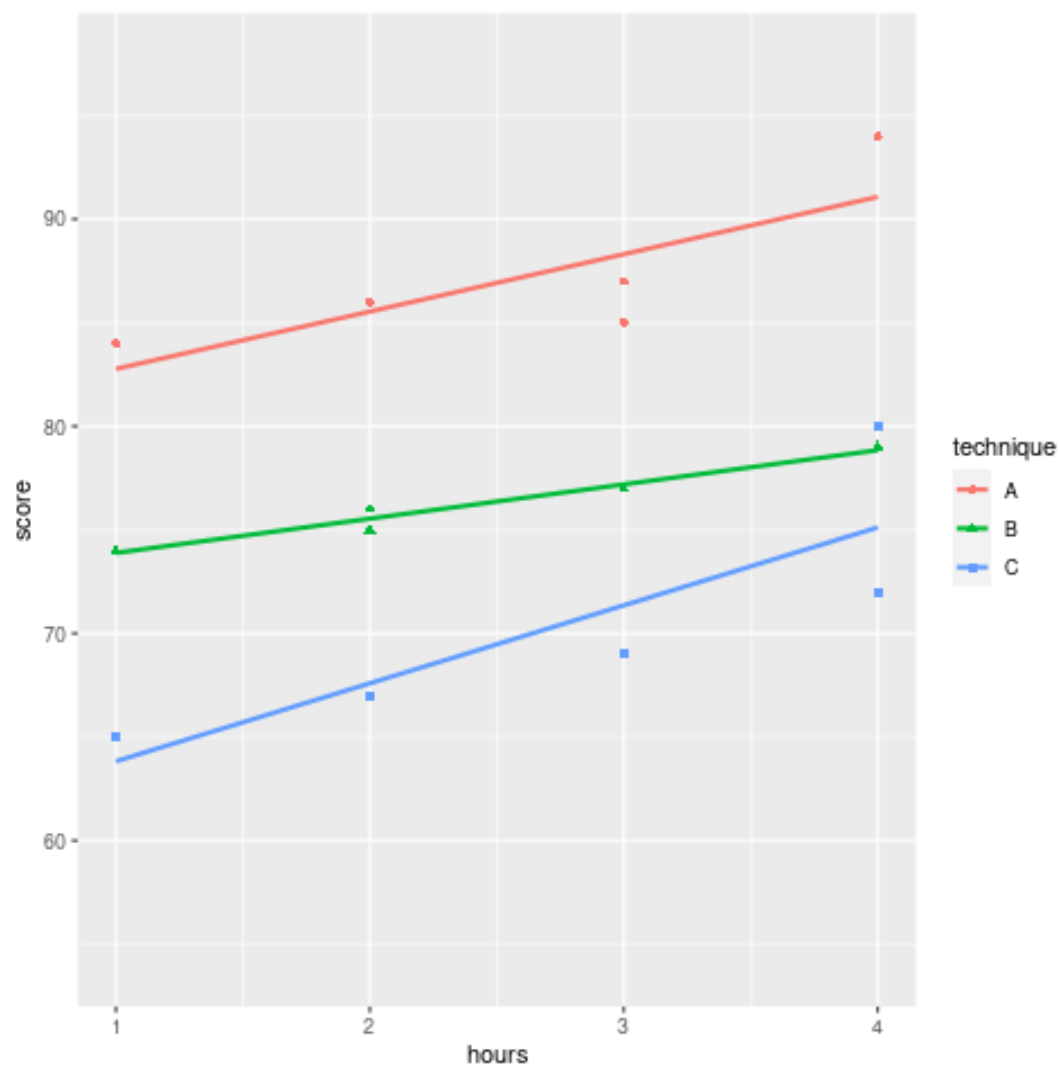如何使用 ggplot2 按组绘制回归线
我们可以使用以下语法使用 R 可视化包ggplot2绘制组回归线:
ggplot(df, aes (x = x_variable, y = y_variable, color = group_variable)) + geom_point() + geom_smooth(method = " lm ", fill = NA )
本教程提供了如何在实践中使用此功能的快速示例。
示例:使用 ggplot2 按组绘制回归线
假设我们有以下数据集,显示 15 名不同学生的以下三个变量:
- 学习时数
- 收到考试成绩
- 使用的研究技术(A、B 或 C)
#create dataset df <- data.frame(hours=c(1, 2, 3, 3, 4, 1, 2, 2, 3, 4, 1, 2, 3, 4, 4), score=c(84, 86, 85, 87, 94, 74, 76, 75, 77, 79, 65, 67, 69, 72, 80), technique= rep (c(' A ', ' B ', ' C '), each = 5 )) #view dataset df hours technical score 1 1 84 A 2 2 86 A 3 3 85 A 4 3 87 A 5 4 94 A 6 1 74 B 7 2 76 B 8 2 75 B 9 3 77 B 10 4 79 B 11 1 65 C 12 2 67 C 13 3 69 C 14 4 72 C 15 4 80 C
以下代码显示了如何绘制回归线,以捕获三种学习技术中每种技术的学习时间和考试成绩之间的关系:
#load ggplot2 library (ggplot2) #create regression lines for all three groups ggplot(df, aes (x = hours, y = score, color = technique)) + geom_point() + geom_smooth(method = " lm ", fill = NA )

请注意,在geom_smooth()中,我们使用 method = ‘lm” 来指定线性趋势。
我们还可以使用其他平滑方法,如“glm”、“loess”或“gam”来捕获数据中的非线性趋势。您可以 在此处找到 geom_smooth() 的完整文档。
请注意,我们还可以使用不同的形状来显示三组中每组的考试结果:
ggplot(df, aes (x = hours, y = score, color = technique, shape = technique)) +
geom_point() +
geom_smooth(method = " lm ", fill = NA )

您可以在这里找到更多 ggplot2 教程。